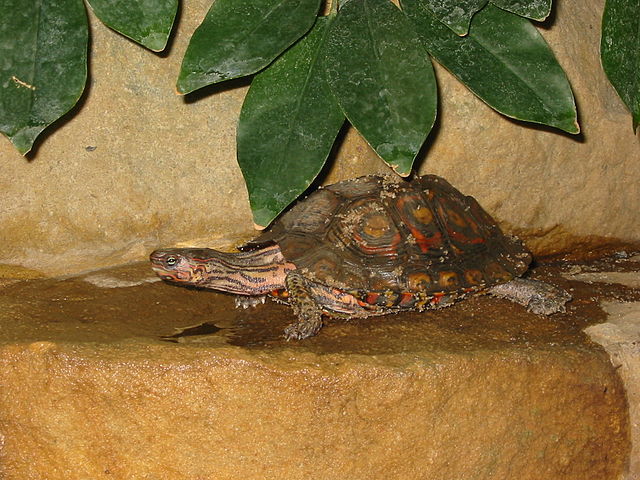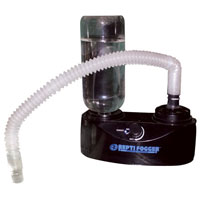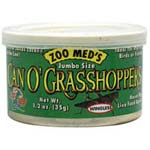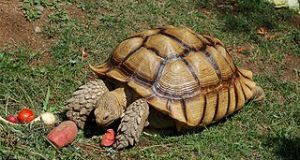The well-named Ornate Wood Turtle (Rhinoclemmys pulcherrima), also known as the Painted Wood Turtle, Honduran Wood Turtle or Central American Wood Turtle, is one of the most exquisitely-beautiful land turtles in the Western Hemisphere. The first I saw, as a boy working for a NYC animal importer, stopped me in my tracks…as did others encountered in the field 30 years later! As curious and intelligent as the North American Wood Turtle (they are not related, by are similar in many ways), these striking creatures make wonderful, long-lived pets, and are regularly bred in captivity.
Description
Ornate Wood Turtles vary greatly in coloration, with some specimens being hard to describe in words. Those sporting the most color tend to be found in the southern portion of the range, and are classified as the subspecies R. p. pulcherrima. However, all are gorgeous, and unusually-brilliant examples may be found among any of the 4 subspecies, and in captive-produced hybrids.
The carapace is deeply etched by the growth annuli, resulting in the same rough, sculpted look that we see in the North American Wood Turtle. The shell is clad in subdued-to-vivid red and yellow blotches and eye-spots, and a complex pattern of red and orange lines marks the head. Adults average 7-8 inches in length, with males being the slightly-smaller sex.
Range and Habitat
The four Ornate Wood Turtle subspecies range from Sonora, Mexico along the western half of the country to Costa Rica; they also occur in eastern Guatemala and eastern Honduras.
Largely terrestrial but often entering shallow water, they favor forest edges and riverside thickets and sometimes adapt to overgrown fields and farm borders.
The Terrarium or Cage
Ornate Wood Turtles reach 8 inches in length and are quite active. A spacious home is essential to their health and well-being.
Hatchlings may be raised in aquariums, but adults do best in custom-made enclosures that measure at least 4’ x 4’ in area; outdoor maintenance is ideal when weather permits. Plastic-based rabbit cages and cattle troughs can also be modified as turtle homes. A pool of shallow water measuring 1’ x 2’ or larger should be available.
Suitable hiding spots are important to even well-adjusted pet turtles; these include deep substrates into which your turtles can burrow and commercial shelters such as the Zoo Med Turtle Hut.
Substrate
Cypress bark and similar products, or a mix of topsoil, peat and sphagnum moss, may be used as a substrate. I always add dead leaves as well…Ornate Wood Turtles will occupy themselves with hunting for hidden invertebrates each time a new batch of leaves or grass clippings is introduced.
Light
Ornate Wood Turtles need daily exposure to UVB light. Natural sunlight is ideal, but be aware that UVB rays do not penetrate glass or plastic, and that fatal overheating can occur quickly.
Your turtle should be able to bask within 6-12 inches of a high-output UVB florescent bulb, such as the Zoo Med 10.0. Mercury vapor bulbs broadcast UVB over greater distances, and also emit beneficial UVA radiation. Be sure to provide shaded areas as well.
Heat
Temperatures should range from 72-85 F, with a basking site of 90-92 F. Incandescent bulbs may be used by day; ceramic heaters or red/black reptile “night bulbs” are great night-time heat sources.
Provide your pet with the largest home possible, so that a thermal gradient (areas of different temperatures) can be established. Thermal gradients, critical to good health, allow reptiles to regulate their body temperature by moving between hot and cooler areas. In glass aquariums and other small or poorly ventilated enclosures, the entire area soon takes on the basking site temperature.
Overly dry conditions may cause health concerns. The substrate should be misted daily; moist retreats, a large water area, and a dry basking site must also be available. Reptile humidifiers can be useful in arid climates.
Companions
Females and youngsters usually co-exist, but must be watched as dominant individuals may attack others or prevent them from feeding. Males usually fight, and often harass females with near-constant mating attempts.
Breeding
Three to five eggs are produced at a time, and females may deposit up to 4 clutches per year. Breeding usually occurs between August and December.
Females sometimes have difficulty passing their eggs, especially if the diet lacks sufficient calcium. Gravid (egg-bearing) females usually become restless and may refuse food. They should be removed to a container measuring at least 5x the length and width of the turtle and provisioned with 6-8 inches of slightly moist soil and sand. Gravid females that do not nest should be seen by a veterinarian as egg retention always leads to a fatal infection (egg peritonitis).
Ornate Wood Turtles have not been well-studied in the wild, but their appetites appear to know no bounds. Pets should be offered a diet comprised of whole animals such as earthworms, snails, crickets and other insects, crayfish, prawn, minnows, an occasional pre-killed pink mouse and a variety of fruits, greens and vegetables. Canned invertebrates, especially snails, can be used to increase dietary variety. A high quality commercial turtle chow such as moistened Zoo Med Aquatic Turtle Food should be mixed into your turtle’s salad.
Goldfish should be offered sparingly, if at all, as a steady goldfish diet has been linked to kidney and liver disorders in other turtles. Spinach and various cabbages cause nutritional disorders and should be avoided.
The calcium requirements of Ornate Wood Turtles, especially growing youngsters and gravid females, are quite high. All food (other than vertebrates and commercial chow) should be powdered with Zoo Med ReptiCalcium with D3 or a similar product (D3 is not necessary for turtles that have access to natural sunlight). A cuttlebone may also be left in the cage, although not all turtles sample one. Vitamin/mineral supplements such as ReptiVite with D3 may be used 2-3 times weekly.
Temperament
Ornate Wood Turtles adjust to captivity quickly, and soon learn to anticipate feeding times and to take food from the hand. Many owners compare them to North American Wood Turtles in responsiveness, intelligence and longevity.
Further Reading
Keeping the North American Wood Turtle
 That Reptile Blog – Reptile, Amphibian and Exotic Pet Care and Information
That Reptile Blog – Reptile, Amphibian and Exotic Pet Care and Information








Hello,
Thank you for the information.
We have become recent (three weeks) owners of a female Wood Turtle, I’m finding it incredibly hard to get information on her. Your website is very helpful, however I have a couple questions.
She stays burrowed in her bark substrate for at least 22 hours of the day. When she comes out, or we take her out, she eats well (10-12 calcium dusted crickets, some lettuces and carrots) and swims in the water portion of her habitat and then find a spot and burrows down. When she hasn’t emerged in a full 24 hours I take her out and soak her in luke-warm water (since they are semi-aquatic, I worry that she will dehydrate). I’m not sure what I can do, I don’t want her to get sick or dehydrate but she stays buried in the bark all the time.
Any ideas? Any help is helpful. I’ve been all over the forums and am having a hard time getting any responses.
just some additional info:
Her habitat is 4′ x 2′, 65% land 35% water, the land is 6-8″ of coconut coir and cypress mulch, the water is 4″ or so deep and stays around 68-69F, she has plenty of hides in the form of logs and artificial plants, an 18″ ExoTerra 5.0 Reptilight and a 60 watt basking bulb.
-everything I’ve read has said the basking bulb is enough, but I’m starting to think (after reading your site) that she might not be warm enough, I have an extra Exo Terra heat bulb, should I put that in?
Thank you in advance,
Holley
Hello Holly,
I’m assuming it’s the species described in the article, and not a North American Wood Turtle? Take temps at the cool side of the tank as well as under the basking light…may be too cool, especially if temps are starting to drop at nite also. It’s difficult to keep them in a split land/water terrarium, unless very small, as substrate will be dragged into the water daily, and they tend to defecate in the water as well. Best to use a large water bowl that can be removed and cleaned daily. Important to change diet once the animal is more active, more in line with what id described in article…no need to offer lettuce, almost useless, nutrition-wise. Please let me know temps etc and any other ques you may have, best, Frank
Hello Frank,
Thank you for the quick response. I can’t tell you how much I appreciate that. I have attached photos of our little turtle. I think she is the Central American Wood turtle, but at the same time the dark areas on her shell and other markings make me think of some of the Bog turtle pictures I’ve seen.
I’ve been discussing this with a Herp. Vet. online and he thinks that the black areas are scaring from shell rot and just need time to heal and grow back new shell. Big relief to me knowing she isn’t actively infected. I’m going to pick up some thermometers later today and get some accurate readings.
Thank you again,
Holley
Hi Holly,
I checked the photos,…it is Rhinoclemmys pulcherrima. It’s impossible to ID source of scarring via photo, but most turtles, especially w/c individuals, bear some. I’ll get back to you with some ideas once I receive the temperature readings, best, Frank
Dear Frank,
Alright, I’ve added a thermometer to the cooler side near the water area and a thermometer indirectly under the basking area. I let the temp. adjust one full day for the 60 watt bulb and then a second full day for the Exoterra Reptilight.
The 60 watt read as follows: 72 f in the basking area and 68 f in the cool area.
The Exoterra Reptilight as follows: 80-81 f in the basking area and 73 f in the cool area.
I’m still concerned things are too cool.
Last night I pulled her out (since she still hadn’t moved from her burrow) and gave her a good soak and then she downed 11 dusted crickets and had a good poo. Once I moved her back to the enclosure she went straight to the burrow and has been there since (roughly 17 hours).
One thing I noticed last night is she has a few new areas that are sloughing. It looks like some of her scutes are growing or healing ans sloughing off the old crap. Kind of like a sunburn or callus sloughing off. What do you think?
Thank you again for all of your help. I’m curious to see what you think of the updates.
Holley
Hello Holly,
yes, too cool..you want to have the basking site at 90-92F, cooler areas from mid 70’s to 85; difficult to diagnose shell via photo or description, but sloughing re-growth is normal; reddened areas or listlessness (assuming temps are fine) should be checked by a vet, however. Please let me know if you need anything, Frank
Hi Frank
I have a 8 ft by 3.5 ft pen I have 3 pancake tortoises in, Would it be better to move the pancakes to a half sized pen (they rarely use the space they have) and put the 3 Ornate woods in the larger pen? I can separate a portion of that too if I need to keep the male apart for any length of time?
Thanks
Louise
Hi Louise,
You’re picking very interesting species…pancakes are wonderful! Yes, sounds like a good option…woods are sig more active and larger than pancakes. Best, Frank
Another question I intended to ask was -Do you know of any good books on this species specifically.I have Andy Highfield’s book on tortoises and turtles
Thanks
Hi Louise,
Unfortunately I’m not aware of any; Ernst/Barbour’s Turtles of the World is online, and has excellent natural history info; click “species” box and enter Latin name in search for detailed info: http://www.thatpetplace.com/natural-cork-bark
I also favor Peter Pritchard’s Turtles of the World…taxonomy dated of course , but the range and detail of personal observations is un-matched (and he’s a great guy!); of course A. Highfield will never steer you wrong on tortoises.
Please keep me posted, enjoy, Frank